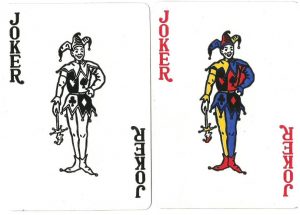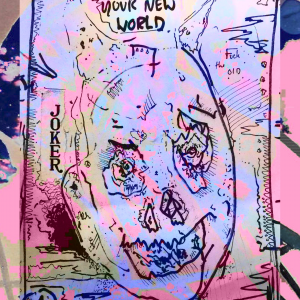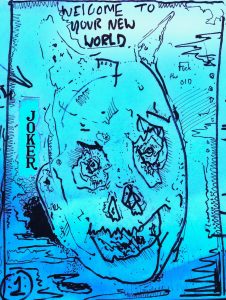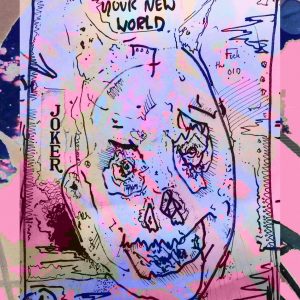For the appropriation task I wanted to take this sinister looking drawing and include words that could truly lift this drawing to new atmospheric heights, by including the lettering found on ordinary playing cards around the globe. The typographical face is such a common thing that by introducing it to my own work and appropriating as such, it lends it’s meaning to my work and allows my own to grow from it’s archaic themes. I have included the two images, one quite obviously being the Joker from a deck of cards, whereas the other is a drawing i’ve done which includes the signature ‘JOKER’ lettering.
While appropriation in art has been around for ages, it began to gain popularity in the 20th century. Most notably with “Dada” artists like Marcel Duchamp, who championed the art of the “ready mades”. Andy Warhol continued the tradition of appropriation, but the times were changing, and borrowing images to create new ones became more controversial with the onset of consumerism.
Consumerism is the bane of society, it’s most probable everyone has owned such deck of cards in there existence, so it could certainly be said that by appropriating these ready made exerts into my own work that I’d be relinquished of my newly produced work immediately. I think that by indoctrinating such work into my own, it adds to the overall quality and due to it being so commonly found it’s therefore directly in our mass consciousness.

 Revolver Gallery. 2017. Andy Warhol and the Art of Appropriation. [ONLINE] Available at: http://revolverwarholgallery.com/andy-warhol-art-appropriation/. [Accessed 06 December 2017].
Revolver Gallery. 2017. Andy Warhol and the Art of Appropriation. [ONLINE] Available at: http://revolverwarholgallery.com/andy-warhol-art-appropriation/. [Accessed 06 December 2017].





